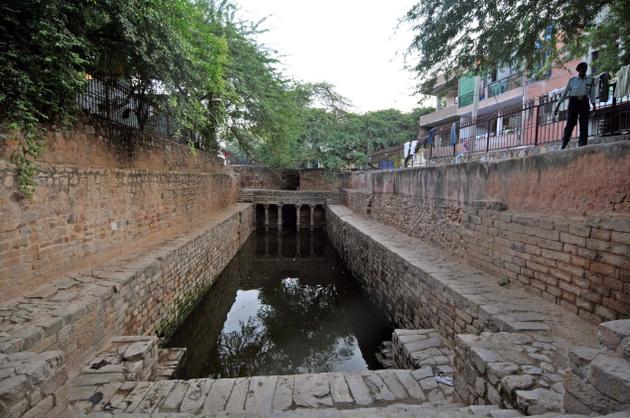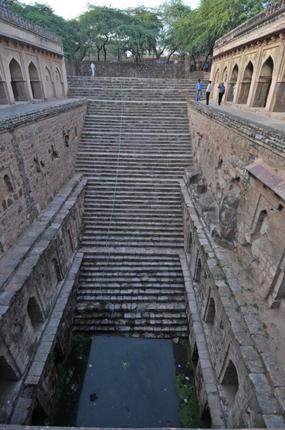
The Archaeological Survey of India (ASI) has revived three water bodies — Rajon ki Baoli, Gandhak ki Baoli, and Hauz-i-Shamsi or Shamsi talab — inside the Qutub premises.
All these baolis, except Shamsi talab, were nearly dry till recently. But for the last couple of months, the water level in these baolis has increased despite negligible rain this season.
“The more the level of water went down in Delhi, the water level in these baolis increased,” said an ASI representative, reasoning constant cleaning of these baolis, which till sometime ago were filled with mud and filth thrown by visitors and people living close by.
While water conservationists opined that the water level increased due to sealing of several borewells in the area, ASI representative argued that the same happened after the cleaning of the choked openings in the baolis, something even the locals agree with.
Ghulam Mohammad, an 80-year-old old resident of Mehrauli village, said: “Sumant Dogra of the ASI used to come here even when the temperature was nearly 49 degrees Celsius and get the baolis cleaned every day for past many months. Soon after the cleaning, we saw water gushing up despite the poor monsoon this year.”
A visit to all the baolis, however, reveals the careless attitude people have towards them.

The Rajon ki Baoli, which dates back to the 15 Century, “was chocked with 20 feet of filth — meaning two storeys of the baoli, leaving only the third or the last storey was visible. We got it cleared. It took us six months. Now the water level has come up to 20 feet. We had to stop intermittently due to lack of funds. We completed the cleaning, which the ASI started in 2004-05, in 2014.”
The baoli is filled with stagnant water covered with algae. One can reach it by climbing down nearly 60 stairs. The ASI official adds: “Visitors throw wrappers, packets and even spit in it. If we don’t clean it every day, the filth will reach 20 feet within a week.”
Gandak ki Baoli is located about 200 meters from this one. The water there “started rising two-three years ago. It now has about 40 feet of water,” he added.
Built in the 13 Century, the water in this baoli, as the name suggests, is mixed with Sulphur, which supposedly has medicinal qualities. Due to this, the locals bathe and wash their clothes in it.
When the reporter visited the spot, a man who has just finished washing his clothes was then seen urinating in the baoli, as a guard looked on helplessly. The ASI official, who comes here daily for inspection, said: “The locals use the baolis as their personal property. Vagabonds roam this area and it turns dangerous by the evening. If we ask them not to dirty the baoli, they take out knives in no time. Even the police is scared of them.”
The third water body or the Shamsi talab, is located in the middle of the Mehrauli market, most of which is unauthorised. The talab was once spread over a huge area, with a tomb in the centre. As the talab started shrinking due to lack of water, the tomb, which is still visible, has been relegated to a side. Water beyond it has dried up already. But “it now has 15 to 20 feet water,” the official adds.
The area around this talab remains unspoilt, filled with the chirps of thousands of birds. A reminder of what the baolis may have looked like in the past.
source: http://www.thehindu.com / The Hindu / Home> News> Cities> Delhi / by Rana Siddiqui Zaman / New Delhi – October 0th, 2014








